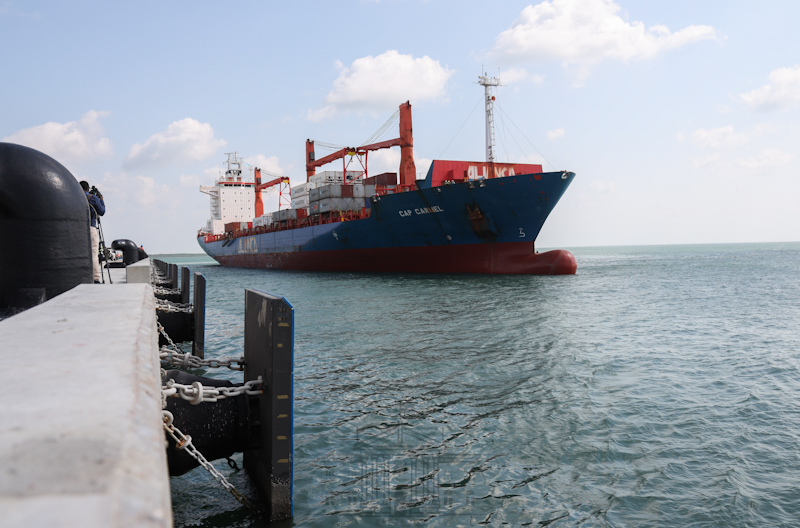Kenyan President Uhuru Kenyatta on Thursday presided over the operationalization of the first berth of the Lamu Port, joining Mombasa Port as a key entry and exit point of cargo, deep into and out of Africa’s hinterland.
The regional KShs 2.5 trillion is part of the Lamu Port-South Sudan-Ethiopia Transport Corridor project (LAPSSET) launched in 2012.
When complete, the KShs 310 billion port will have 32 berths, 29 of which will be financed by the private sector, making it the largest deep-water port in Sub-Saharan Africa.
“As a critical pillar of the Lamu Port-South Sudan-Ethiopia Transport (LAPSSET) corridor project, this Port will connect South Sudan, Ethiopia, and Kenya. Eventually, it will connect northern Kenya to the Middle Belt of Africa; which runs from Dakar, Senegal in the west to Lamu in the east,” President Kenyatta said.
The President said Lamu Port and LAPSSET form an integral part of the broader connectivity the Government is establishing through the Kenya Transport and Logistics Network (KTLN), an ambitious infrastructure blueprint that seeks to seamlessly link the country’s ports through railways and pipelines.
“In the next phase of LAPSSET, Lamu Port and northern Kenya will be connected by rail and pipeline links, which will eventually reach Ethiopia, South Sudan and other regional states, with the final stop being Dakar in Senegal,” the President said.
MV Cap Carmel, a Singaporean container ship, became the first to dock at Lamu on its way from the Port of Dar es Salam in Tanzania to Salalah in Oman.
1/2 President Uhuru Kenyatta witnesses the docking and discharge of cargo from MV CAP Carmel, the first vessel to dock at the new Lamu Port. #LamuPortRoars #LamuPortTakeOff pic.twitter.com/xFWKDeQUhJ
— State House Kenya (@StateHouseKenya) May 20, 2021





1 Comment
Pingback: Kenya Declares 30-day Dusk-to-dawn Curfew in Lamu Over Insecurity